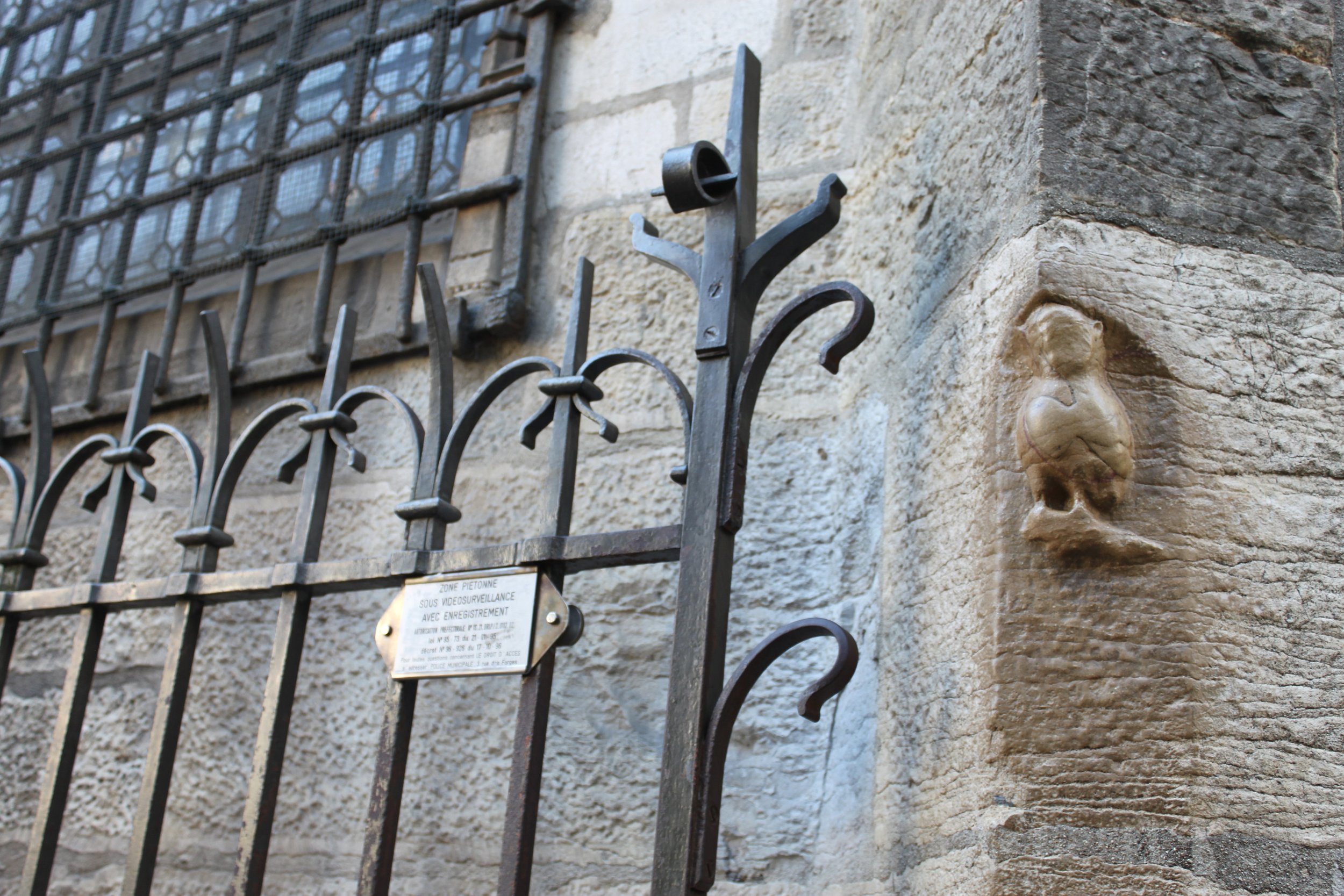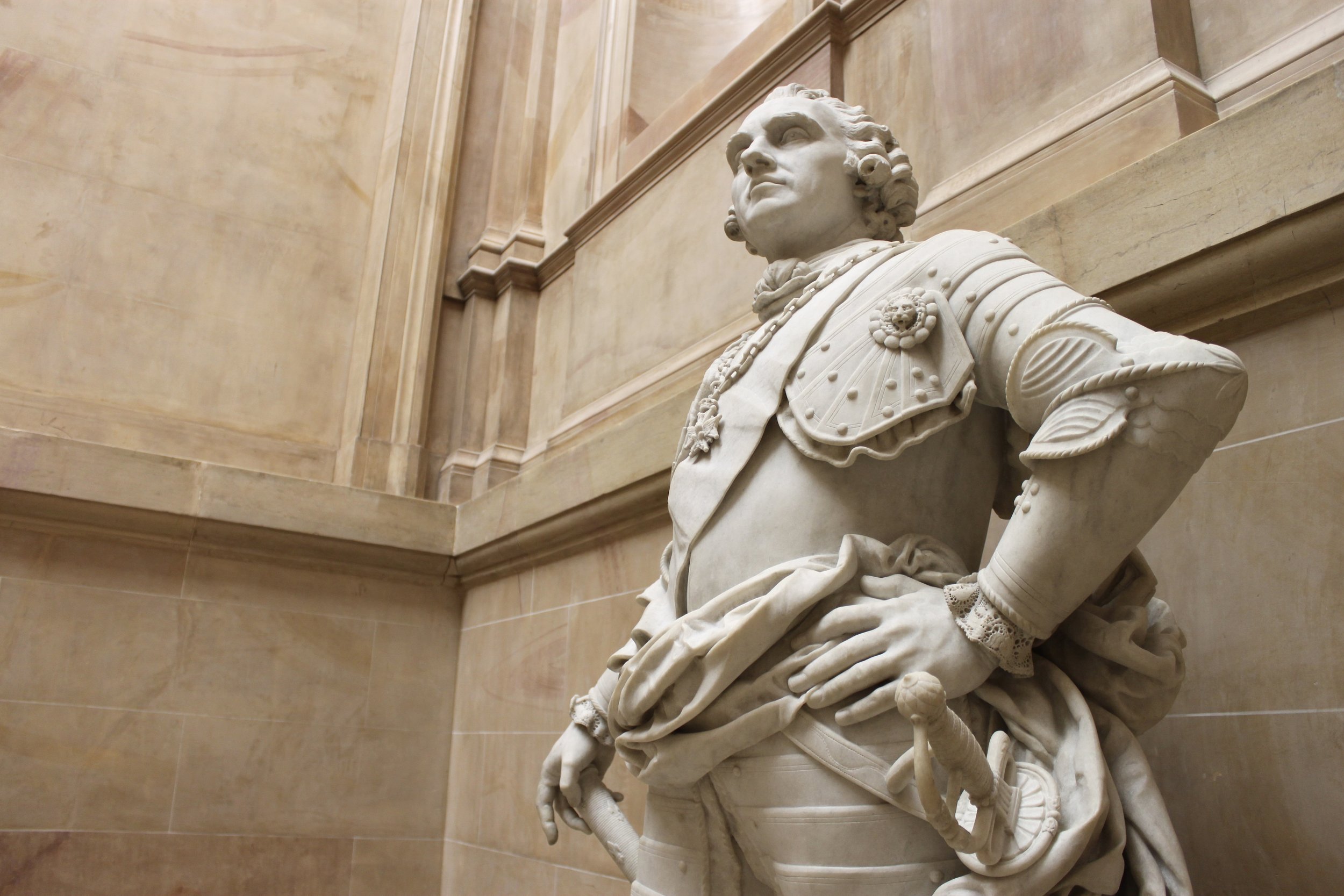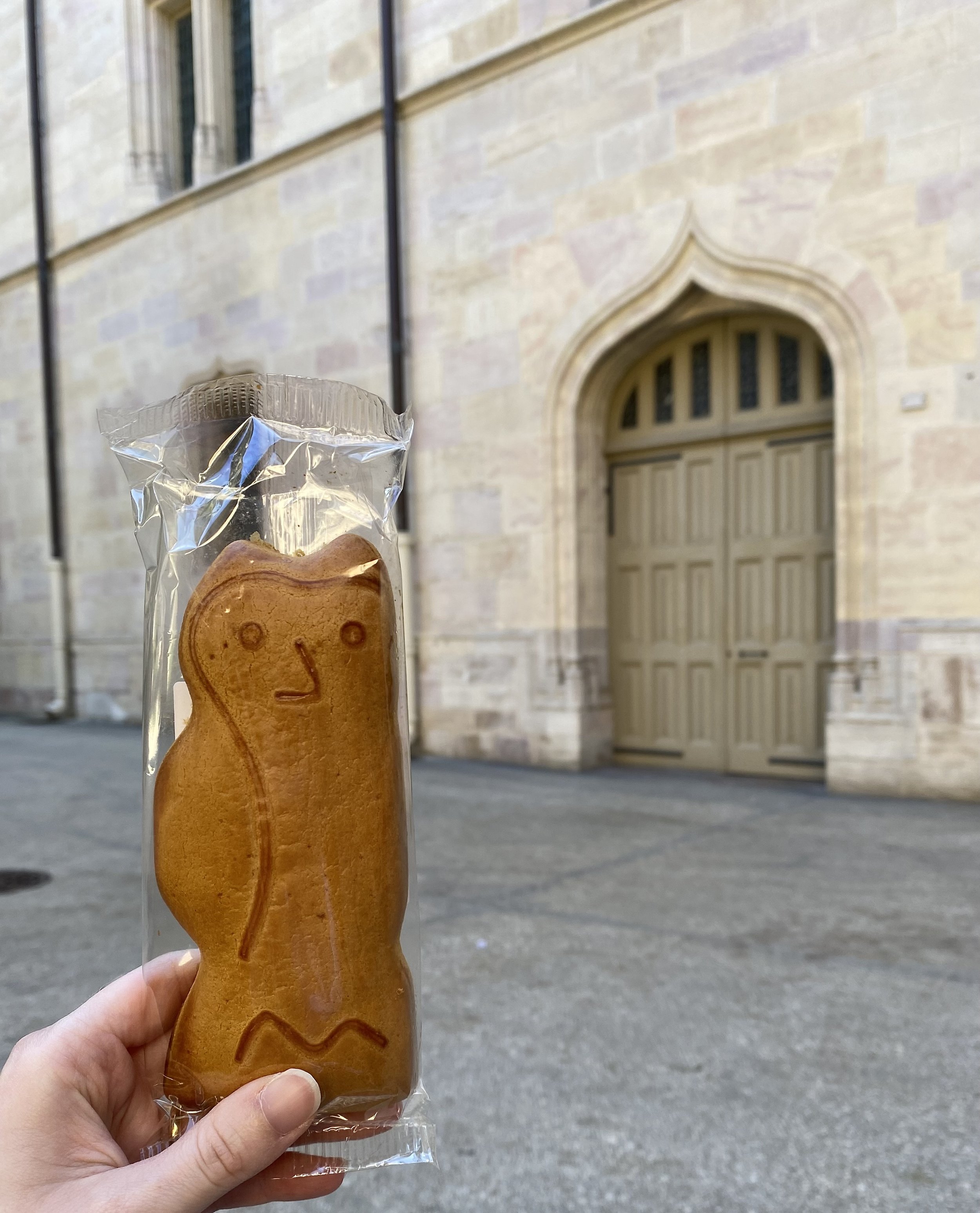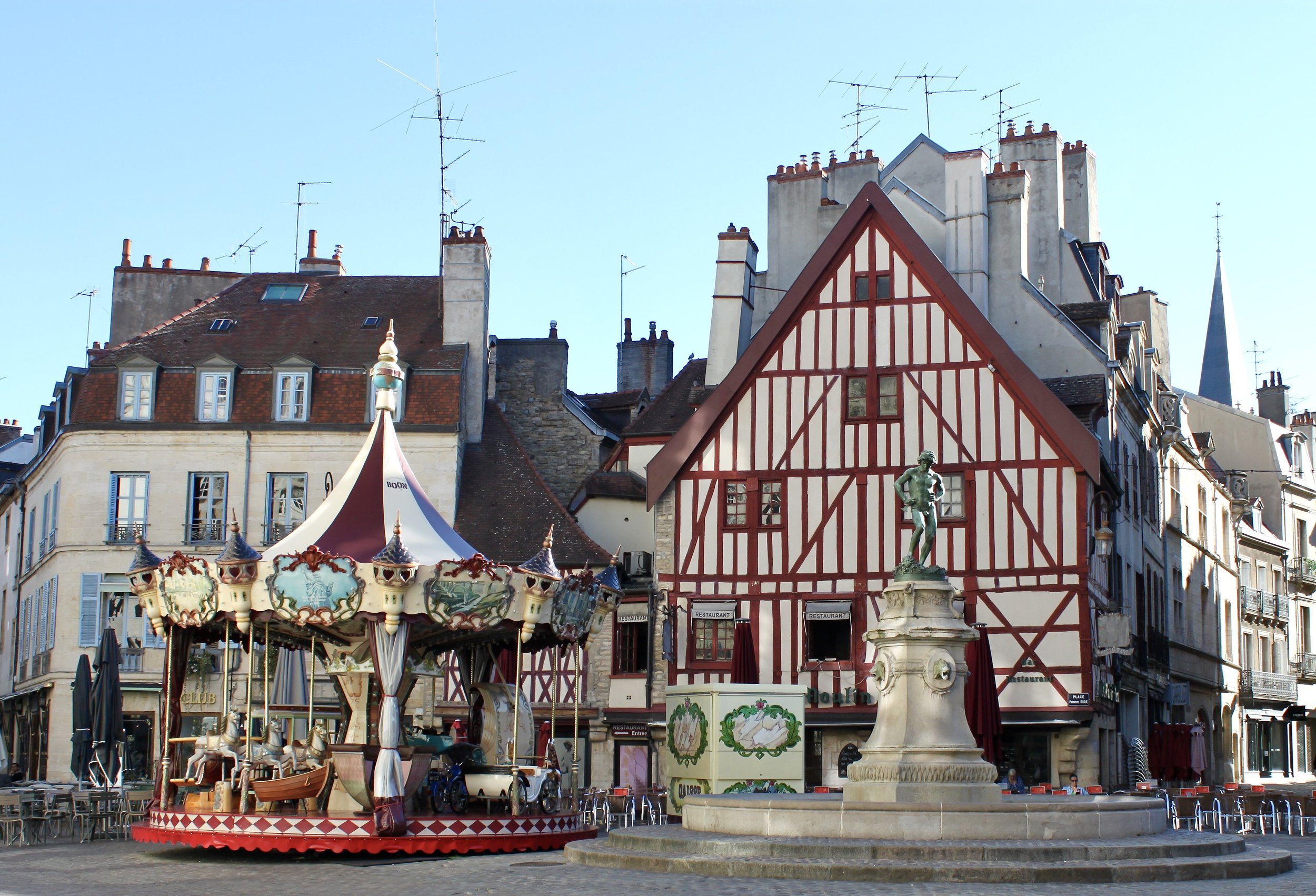DIJON MUST SEES
Dijon is the capital of the Burgundy region of France, and its UNESCO city center showcases stunning medieval and Renaissance architecture. I found Dijon to be incredibly charming, with enchanting architecture and each cobblestoned half-timbered-house-filled street better than the last. In the heart of the city, I barely saw any cars, and a lot of people walked in the middle of the street. As I strolled down Rue de la Liberté, I witnessed shop owners say hello to each other as they opened their doors for the day. The atmosphere was convivial, relaxed, and something I definitely want to experience again! This is by no means an exhaustive list of things you should see or shops you should visit, but if you have never been to Dijon before and you only have one day to make the most out of this impressive medieval city, here are the things I would do:
Notre Dame de Dijon
The Church of Notre-Dame of Dijon is a Roman Catholic church, and is recognized as a 13th century masterpiece of Gothic architecture. Most notably, there is a small owl carving on the north façade of the church. It is said that if you touch the owl with your left hand and make a wish, it will come true! As this owl has granted many a wish, the sculpture lacks detail due to all the hands that have reached up to find luck over the years! In 2001 someone actually vandalized the owl with a hammer, but an expert from the Louvre took on the repairs and the mascot of Dijon is now under video surveillance!
the owl perched on Notre-Dame de Dijon
Le Parcours de la Chouette
Continuing with the owl theme, stop by the Tourist Information Center to grab a pamphlet that details Le Parcours de la Chouette, or The Owl Trail. The route hits a lot of city landmarks, and is a lovely way to explore Dijon on foot. The path takes about an hour to walk, and is very easy to follow as there are little bronze arrows built into the pavestones throughout the city.
a mark of Le Parcours de la Chouette!
Musée des Beaux-Arts
Having walked through many fine arts museums, Musée des Beaux-Arts de Dijon is one of the most enjoyable (still not as good as the fine arts museum in Rouen, but a contender)! Having opened in 1787, it is one of the oldest museums of France, and is located in a former palace which was the headquarters of the Burgundy State in the 15th century.
inside Musée des Beaux-Arts de Dijon
Tour Philippe le Bon
Climb Tour Philippe le Bon for wonderful views of the city! You will start in front of the Tourist Information Center to meet up with your guide, who will then bring you up the 316 steps of the tower’s spiral staircase. You will not have to climb all 316 steps consecutively, as your guide will stop to explain interesting tidbits about this 15th century tower (so you can catch your breath if you never do cardio like me). Once you emerge at the top of the tower, you will be rewarded with incredible sweeping views of the city. Take photos of the gargoyles that are on each corner of the roof terrace, or just admire the view! The entire experience takes about an hour.
view of the city from atop Tour Philippe le Bon
Moutarde Maille & La Moutarderie Fallot
You probably can guess one of the specialties that Dijon is known for: mustard! And while Dijon mustard originated in this town, this specific mustard has no protected status. This means unlike champagne (which is only designated as champagne if it is made in Champagne, France), Dijon mustard can be made anywhere in the world and still be called “Dijon mustard,” as long as a basic recipe is followed. However, I do humbly say that the best Dijon mustard resides in its birthplace of Dijon, France and should therefore be eaten here! My personal favorite mustards are from La Maison Maille and La Moutarderie Fallot. The La Maison Maille boutique, which first opened its doors in 1845, offers enthusiasts taste tests to determine which mustard they would like, and then an employee pours it in a jar right in front of you! Keep the jar and bring it back so they can refill it for you anytime! You can also get a decorative cork stopper to seal in your tangy treat. Like Maille, La Moutarderie Fallot is also in the heart of the city centre. The mustard produced is made using traditional stone milling techniques, and is the last independent family run mustard mill in Burgundy, providing robust mustards since 1840.
Maille store on Rue de la Liberté
Mulot & Petitjean
While Dijon, France just screams mustard, it also festively shouts gingerbread! In fact, at one point, Dijon had 12 gingerbread manufacturers. Some say that the Dukes of Burgundy delighted in this spiced treat thanks to Marguerite of Flandres, spouse to Philippe the Hardy who was the Duke of Burgundy. Others say it was her grandson who tasted one slice of the cake in Courtrai and actually took the cook back with him to Burgundy! No matter who brought gingerbread to France, I sure am grateful it is here. Unfortunately, there is only one gingerbread factory left in Dijon, and that is the independent French family enterprise of Mulot & Petitjean, founded in 1796. I personally love their Gingerbread Owl, and as I sat on a bench on a calm patch of green behind the Tourist Office, the subtle flavor of spices reminded me of Christmas. They also have plenty of gingerbread loaf options, as well as nonnettes! (Though nonnettes have good flavor, I myself find them to be a tad dry.)
the little owl I purchased at Mulot & Petitjean!
Jardin Darcy
Jardin Darcy is a public garden built in 1880, recognizable by a replica of a polar bear sculpture by the Burgundian sculptor François Pompon (with the original in Musée d’Orsay). The park is named after Henry Darcy, a famous engineer whose water reservoir is the foundation on which the garden was established. While there is a plethora of green spaces to picnic or lounge about in Dijon, this park is wonderfully situated between the train station and the historic centre. Stop by before you head to the train for your next adventure!
inside Jardin Darcy
Porte Guillaume
An archway without anything around it might look a bit odd to some, but it was originally inserted in city walls that are no longer present! Porte Guillaume, or William Gate, is an arch marking the west entrance of the city. It has gone through many names, first called Porte Condé by the arch’s architect Jean-Philippe Maret to honor the Prince of Condé, governor of Burgundy. Then during the Revolution, the gate adopted the name Arc de la Liberté. Finally, it took on the name Porte Guillaume after William of Volpiano, the abbot of Saint Bénigne Abbey.
Porte Guillaume
Place François Rude
Place François Rude is named after the famous French sculpture born in Dijon. (You might have seen his work on the Arc de Triomphe!) However, locals call this square, “Place du Bareuzai” because of the statue of the grape harvester in the square’s fountain. In the past, wine growers would tread the grapes by foot, and would emerge with “red stockings” or “bas rosés” in French. Don’t worry about missing this square, as I randomly came upon it after stepping off my train from Paris to Dijon. You will immediately recognize it by its darling red-painted half-timber house behind the fountain with the grape stomper, and a charming carrousel.
Place François Rude








